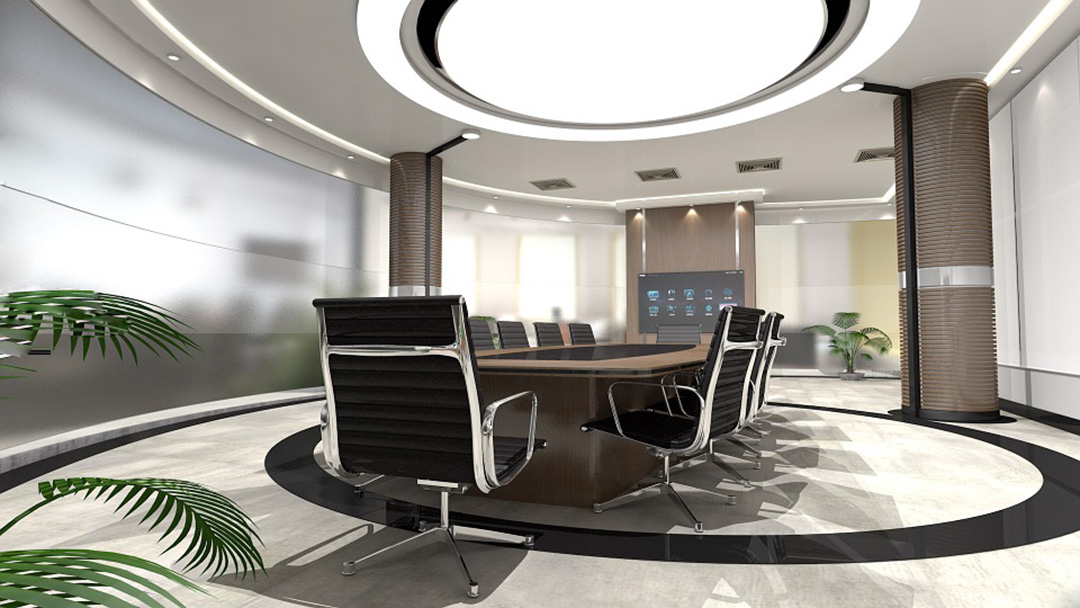-
Philippines
Copyright © 2025 Powered by BCI Media Group Pty Ltd
Confirm Submission
Are you sure want to adding all Products to your Library?
Contact Detail

Remote offices are becoming more and more common, especially as technology makes it possible for organizations to spread out, source labor closer to sources of education, and outsource to cheaper countries. At the same time, splitting organizations up between geographic locations can add huge stresses to communication, sometimes forcing individuals to drive or fly back and forth on a weekly basis.
Video conferencing, including always-on video conferencing portals, is one solution used more frequently by organizations that want to solve this problem. These portals exist as windows between offices, sharing the everyday life and actions of an office as though it were visible a wall away.
While increasingly popular, video portals have pros and cons, and you should consider both before installing one.
Video conferencing portals have a lot to offer, but there are drawbacks as well. It’s important to consider why you might not want to install video conferencing portals in your offices.
High-quality video conferencing portals cost money. A good system includes software, hardware, and bandwidth, all of which can be expensive. Here, it’s important to consider that if you don’t have the budget to invest in a quality solution, you’re better-off not getting one at all. Low-quality conferencing is frustrating, time-consuming, and will often inhibit communication more than improve it.
Whether your video portals function as a type of call or television, streaming a workday from office to office, employees have to coordinate to use them. This means having everyone show up at the same time or place, remembering to check the video portal, and actually answering it. This will result in different scenarios depending on where and how video portals are set up.
For example, one of the most common scenarios is to establish a video portal in meeting rooms, allowing individuals to simply turn a screen on and press a button to call the team on the other end. This requires coordination, because everyone has to be in the right room at the same time.
Other portals function more like windows and exist to keep people informed, which requires significantly less coordination.
Most people aren’t accustomed to using a video portal, and they will have to adjust in order to make good use of it. Individuals will have to train themselves out of calling or sending a message to see if someone is in office, and just check the portal instead. They’ll also have to get used to being able to simply call up another video portal as part of a meeting. This can result in underutilization, especially at first.
It’s important to consider that if you put two teams in two different offices and connect them with a video portal, they are more likely to have two separate discussions among themselves.
Placing groups of people who know each other into each room is less likely to foster a cross-office discussion than fitting 2-3 people who know each other into one room. You will have to monitor and manage how people communicate through portals to ensure they are fostering that communication between offices.
Video conferencing portals function much like a telephone in that they create a physical connection between two spaces. However, with added video functionality and sometimes the ability to call in, utilizing whiteboarding or screen-share to present can offer a lot in terms of value and improved communication.
Individuals who can see the body language and other non-verbal communication of a speaker are more likely to correctly interpret that person, consider their emotional response, and engage and collaborate. While not quite at the level of face-to-face communication, it’s the next best thing.
Most importantly, video conferencing actually improves the quality of collaboration and connection, allowing users to better share with each other and to better build on each other’s ideas. With some experts suggesting that 80-90% of communication is technically non-verbal, visual communication tools help teams to better communicate with each other.
Pushing a button to open a video portal is typically a lot more convenient than arranging a separate video-conference call, where each user has to log-in or actually call.
While most portals allow individuals to call in from their own devices, the goal is to largely have most people in one of the rooms on the portal (which can be more than two). This decreases interference, improves convenience, and typically greatly improves the quality of the call.
For example, most users won’t have to spend time setting up and adjusting headsets, calling back in because their original call failed, or figuring out who is who on a call.
While video conferencing is technically expensive, it’s a lot cheaper than paying for travel costs, especially on a weekly basis. Asking individuals to step into a meeting room to discuss and share is significantly cheaper than sending those individuals back and forth to each other’s offices.
Integrating the whole team from each side is also more convenient than paying for team leads to travel and leaving everyone else out. Video conference tools can also make this sort of sharing easy, with tools for presentations, lectures, and file-sharing, so teams can see each other’s work such as code during the conference.
While calls and travel are both very efficient means of communication, asking people to sit down and have a visual conversation will speed up collaboration and decision-making. While this might not be a factor in choosing video conferencing or not, it will improve how remote teams are able to make decisions together.
Organizations are increasingly working further apart, with teams in different geographic locations or even different countries, and with flex work and freelancing as a standard part of operations. Creating visual communication tools like video conferencing is an important way to bridge those gaps, allowing individuals to maintain quality of communication without having to travel to see each other.



